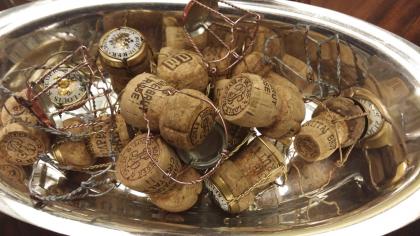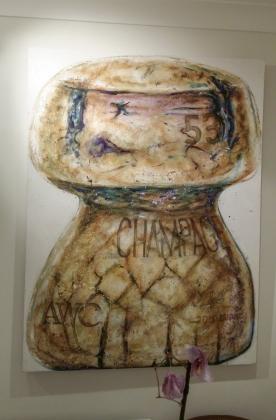Investing in Wine. Is it Worth It?
POSTED ON 11/11/2014With the fine wine market peaking in 2011, Sir Alex Ferguson missed the right time by a couple of years but still did well for himself. Quitting while ahead after laying down wine since 1991, the former Manchester United manager netted a cool £2m on the sale of his so-called “star players”at Christie’s this year.
 Romanée-Conti
Romanée-Conti
If you have money to burn, it’s deeply fashionable today to invest in wine as part of a portfolio. The Ferguson cellar showed all the hallmarks of the investment consultant at work: Bordeaux first growths, Petrus, Gaja’s single vineyard Barbaresco, Sassicaia and sexy Pomerols and Burgundies, including, the ultimate in wine investment kudos, Domaine de la Romanée-Conti.
Some, like the Master of Wine Jancis Robinson, are not that keen on the idea of wine investment because it’s divorced from the pleasure principle behind the drinking, but I don’t have too many scruples about money being made from wine. There are enough people who do it after all, including the amateur collector who buys two cases to finance the other one down the road as well as the investor-speculator for whom wine is just another commodity, albeit a luxury one.
 Cristal
Cristal
Swag is the acronym for silver, art, wine and gold – respectable, alternative investments, that is, for anyone with money to invest and a desire to diversify a portfolio. Fine wine investment may bring cachet to such a collection, but is it still offering decent returns?
Although no one can put their finger on its exact value, the secondary market for fine wine has been estimated to be worth in the region of £4bn. The global financial crisis of 2007/2008 and the ensuing credit crunch caused jitters, but anxieties were offset to an extent by a period of renewed optimism in the saleroom when Hong Kong’s financial secretary John Tsang set the fragrant harbour up as Asia’s fine wine hub by announcing the abolition of duties on wine in 2008. It fizzed with excitement at the prospect of Chinese riches and all the big auction houses piled in, naturally.
Fine wine prices peaked in 2011 with average wine auction lot prices at $3,940 (£2,481), dropping to $2,813 (£1,771) last year. Since the highs of the saleroom in 2011, the subsequent decline has been mirrored by a fall in the Liv-ex 100 index, one of the most reliable fine wine price indicators.
The index has shrunk for three consecutive years since the peak. All ships sink in an ebb tide and, in tandem with the economic downturn, Bordeaux, which, accounts for the lion’s share of fine wine trading, has been mired in stockpiling problems after setting the price bar too high for three unattractive vintages, 2011-2013.
 Bordeaux masterclass
Bordeaux masterclass
Saleroom activity has slowed, and estimates for sale lots at auction have also gone down. At the same time, many of the wine funds often set up offshore to help investors channel money into tax break operations have sailed close to the rocks or even collided with them on occasion as the value of their portfolios has plummeted and impatient investors have asked for their money back. The Vintage Wine Fund for instance, once boasting $110m (£70m) in assets, had to be wound down last year, while another big fund, Nobles Crus, has been hit with requests for redemptions.
If, as an individual collector, you had bought Bordeaux futures en primeur (jokingly re-named non-primeur by one exasperated UK wine merchant) from the 2010 vintage, the last great Bordeaux vintage, the value of your wine will still, with few exceptions, be lower today than it was when you bought it more than three years ago.
Yet another alarm bell has rung loud across the oceans, namely the increase in counterfeit and fraud. The most recent, high profile case is that of the Indonesian confidence trickster, Rudy Kurniawan, also known as Dr Conti, referring to Burgundy’s Domaine de la Romanee-Conti. When Kurniawan’s California home was raided by federal agents, the feds found an arsenal of wine-faking impedimenta whose purpose was to create counterfeit wines for sale at auction, through brokers and consumption at fancy dinners.
 Ornellaia
Ornellaia
After making a fortune out of fooling a gullible wine collector community into believing they were drinking what the wine said it was on the label, Kurniawan was convicted and sentenced for 10 years on 7 August this year in New York. He was also ordered to pay compensation to his victims totalling $28.4m (£17.8m) and to forfeit property worth $20m (£12.5m). Yet wine fraud doesn’t end with one conman’s conviction. The problem of just how many of his forged wines are floating about the Oenosphere is compounded by further frauds as yet undetected.
The spur to much of this fraudulent activity has been the lure of financial gain thanks to skyrocketing prices for the world’s finest wines. Not surprisingly, provenance and condition have moved to centre stage. Tough new anti-counterfeit measures currently being adopted by top châteaux and domaines, including laser technology and prooftagging, could help to restore fragile confidence at least in younger fine wines, although it’s too late for older wines already in circulation.
Ironically, despite economic woes and frauds, a handful of wines continue to defy the laws of financial gravity. Burgundy’s Domaine de la Romanée-Conti, the darling of the investment market, is the locomotive behind a handful of emerging Burgundy stars. Deluxe champagnes Krug, Cristal, Dom Pérignon and Salon le Mesnil are enjoying their moment in the sun, Italy’s “supertuscans” such as Ornellaia and Sassicaia are growing in demand. Despite the fact then that wine investment has taken a dent in confidence, history tells us that sooner or later, it will bounce back and the hard lessons learnt yesterday will be forgotten in an unseemly rush to diversify portfolios.
 Champagne
Champagne
Anthony Rose, The Independent’s wine critic, has just completed the auction and investment sections for the 4th edition of “Jancis Robinson’s Oxford Companion of Wine”, which is published next year

